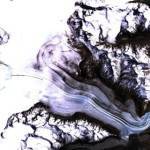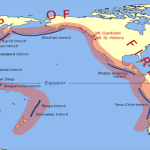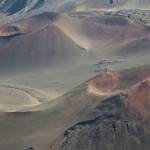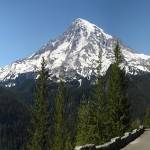Shield Volcano Facts
A shield volcano resembles the appearance of a Hawaiian warrior’s shield in that they have a low-angle profile. In almost all cases the comparison to a shield is done because the width of these volcanoes is typically around 20 times the size of their height. Despite this, they can vary greatly in terms of size with some having small diameters of a few kilometers while others can be over 95 kilometers. Some located in Hawaii reaching an altitude of 8,000 meters above the sea floor, which is 12,000 meters above their base. In fact, some of the largest volcanoes you will find on the planet are actually shield volcanoes, with Mauna Loa, located on Big Island in Hawaii, being the largest of this type.
Formation
A shield volcano is most likely to form during a lava flow of fluid basaltic material, usually those that flow down from either a flank fissure system or the summit itself. The most common type of shield volcano is those that form during one long-term eruption. Some shield volcanoes, however, are pyroclastic shields meaning that their low-angle slopes have been formed from the accumulation of fragmented material over the course of several eruptions.
Because of the variety of formation, you will see slightly different shapes in the various shield volcanoes around the world. The ones in Iceland, for example, are generally much smaller in size and almost perfectly symmetrical while those found in Hawaii are much larger (think of Mauna Loa) and elongated. The shields found on the Galapagos Islands are different from both of these, having flat tops, steep middle slopes and deep calderas at the summit. These differences not only show variations in formation but also in the eruption types generally found in the region.
Eruptions
Although the type of eruptions found in a shield volcano can vary slightly, most experience Hawaiian eruptions. These eruptions will usually have ground flows of lava that is capable of traveling great distances. Because the flows travel a longer distance, the individual sheets of lava are generally thinner. These longer lava flows from the eruptions are what gives the shied volcano their distinctive shape.
Hawaiian Volcanoes
Hawaii is home to a great deal of the planet’s shield volcanoes as the Pacific Plate and the Hawaii hotspot have combined to form a large chain of various volcanoes of all types. This chain includes more than 43 major volcanoes, including Mauna Loa. As mentioned earlier, Mauna Loa is the largest shield volcano. It is also Hawaii’s highest volcano, reaching 4,170 meters above sea level in addition to traveling 13 kilometers down below the waterline. This volcano has most likely been eruption for over 700,000 years and the most recent eruption took place in 1984.
Mauna Kea is another shield volcano found in Hawaii and it has an altitude 4,205 meters above sea level and from its base below sea level it is 10,200 meters. This means that although Mauna Kea has a higher elevation than Mauna Loa, its total height is smaller. Mauna Kea is probably around a million years old, attributing to its steeper and smoother profile. Despite this, this shield volcano has experienced several explosive eruptions late in its life which created several cinder cones on its summit.
Another one of Hawaii’s shield volcanoes is Kilauea which is in fact the most active of the island’s volcanoes. This volcano is only between 300,000 and 600,000 years old, making it one of the youngest in the area. At first scientists actually thought Kilauea was part of Mauna Loa; however they have since discovered that it acts independently. Interestingly enough, Kilauea’s current eruption began on January 3, 1983, meaning it has been going on for 30 years to date.
Iceland
Another place that you can find multiple shield volcanoes is in Iceland. The shield volcanoes found there usually range from 5,000 to 10,000 years old. These volcanoes are also usually smaller than those in other locations and are generally symmetrical and their eruptions usually occur from their summit calderas.
Galapagos Volcanoes
Another area with a great deal of shield volcanoes is the Galapagos Islands, with the volcanoes ranging from 700,000 to 4.2 million years old. Several of the islands are in fact shield volcanoes, such as Fernandina. This shield volcano has steep upper flanks but low-angle lower flanks. It has been currently erupting since April of 2009.
In terms of composition, the lava flows found in the Galapagos Islands are very similar to those in Hawaii although unlike other sets of volcanoes formed by one hotspot, they do not create a line.
Other Volcanoes
In the Auckland volcanic field in New Zealand you can find Rangitoto which actually forms its own island with a width of 5.5 kilometers. This volcano erupted around 550 years ago. In the United States, you can find the Belknap volcano in the Cascade Range in Oregon in addition to the Newberry volcano which takes up around 1600 square kilometers of land.




